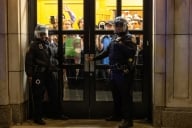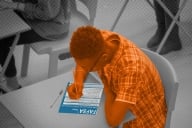You have /5 articles left.
Sign up for a free account or log in.
March Madness celebrations caused a noticeable spike in COVID-19 infections last spring, a new study published by JAMA Network Open found.
The study measured infection rates in counties that had a team participating in the NCAA Division I men’s basketball tournament and compared them to counties in the same state that didn’t send a team to the competition. Eight days after a team’s final game, the infection rate in the surrounding county was 13 percent higher than elsewhere in the state, the data showed, and 24 days after the final game, the infection rate was 22 percent higher. By day 30, however, the participating county’s case count roughly equaled that of its neighbors.
Using data from The New York Times, the study counted COVID-19 infections per 100,000 residents over a period of 100 days, starting 50 days before each team’s last game in the tournament and ending 50 days after the team was eliminated.
March Madness, which ran from March 18 to April 5, took place before many adults -- and most college students -- were vaccinated against COVID-19. Because the tournament was held entirely in Indiana this year, with less travel and lower attendance than usual, the virus likely spread through watch parties or postgame celebrations, study author Ashley O’Donoghue told WBUR.
“For lots of universities across the country where vaccination isn’t mandated and [infection rates] are low, this certainly indicates that student gatherings can still be detrimental to their local communities,” O’Donoghue said.








